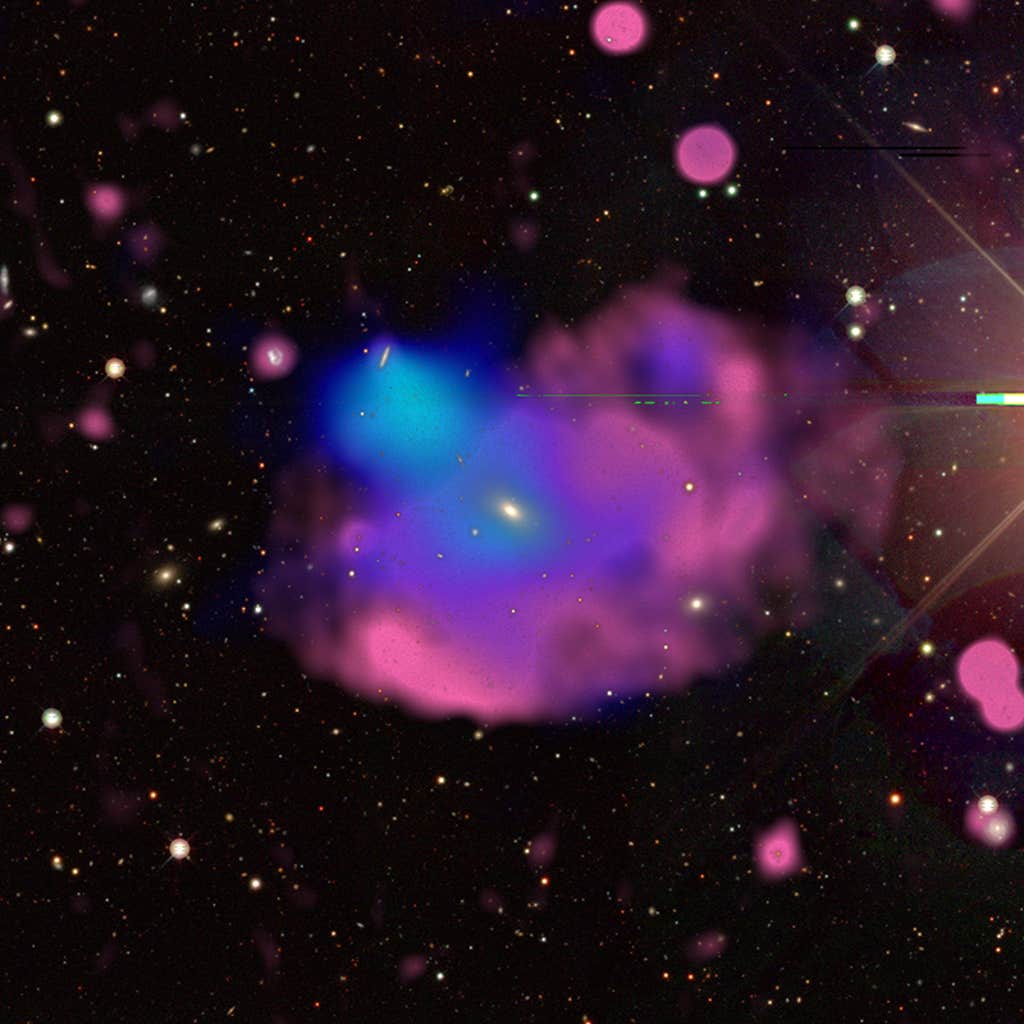In 2019, rather out of the blue, a group of Australian astronomers discovered some mysterious rings in the night sky. Detected by radio telescope, these eerie, vaporous whorls looked vaguely like the viscous plasma Ghostbusters shoot from their proton blasters to catch ghosts, or the undulating globs in a giant lava lamp. And they were vast: hundreds of thousands of light-years across—easily dwarfing the size of our own galaxy—and millions of light-years away.
The astronomers were at a loss to explain them.
The rings were unlike any others observed in images produced by radio telescopes, like the swirling husks of matter and fumes shed by dying stars, or the frisbees of gas that can surround newly formed stars, known as protoplanetary disks. Previous studies seemed to make no mention of them.
But they weren’t just artifacts of telescope data—the equivalent of an eyelash straying across the viewfinder of an old 35mm camera, or the intrusion of the photographer’s thumb into the family portrait. In fact, the circles aren’t visible by telescope in the traditional sense at all. Instead, they are apparent only in the data collected from telescopes that observe other parts of the light spectrum, such as radio waves, infrared radiation, and X-rays. This data, consisting of strings of numbers, can then be translated into visual information—in this case, into impressions of enormous cloudlike structures that seem to glow along their edges.
He said, ‘Detection,’ and I just started cheering!
And because the rings are, well … so strange, and so new, the Australian team that initially discovered them called them simply “odd radio circles,” or ORCs for short—inspiring no small amount of pride among Lord of the Rings fans. (In The Lord of the Rings fantasy trilogy, orcs are humanoid foot soldiers and slaves to dark lords of Middle-earth.) The name stuck.
Since the first sighting, more ORCs have turned up, both in newer data from the Australian radio telescope and in images gathered from other telescopes—11 possible ORCs in all, including one with a curious double-lobed feature. “I would say we are really at the beginning of understanding these kinds of systems,” says Xiaoyuan Zhang of the Max Planck Institute for Extraterrestrial Physics (MPE), in Germany.
Zhang and his colleague, Esra Bulbul, also at the MPE, just published a new study of one odd radio circle, called the Cloverleaf, which is about 600 million light-years from us and spans over 325,000 light-years from side to side. For comparison, the Milky Way is less than a third of that size, only about 98,000 light-years across.
Bulbul, the study’s lead author, and Zhang sought to get to the bottom of why ORCs come about by using a telescope that observes X-rays rather than radio waves. Looking through the European Space Agency’s XMM-Newton telescope, they gathered data suggesting that the Cloverleaf may have been formed by two groups of galaxies that hurtled toward one another, drawn by mutual gravity, over the course of millions of years, and that eventually began to merge.

Each galaxy group, their data suggest, may have contained dozens of individual galaxies dated to the birth of the universe itself, in various phases of distortion and disfigurement. What Bulbul’s paper postulates is that this merger of galaxy groups created massive shockwaves that may have sped up so-called fossil cosmic rays—cooled remnants of ancient cosmic light—thus creating the radio emissions that Bulbul and Zhang report in their study.
Bulbul’s understanding of the Cloverleaf ORC began with just a flicker of data from another telescope, eROSITA, run jointly by Germany and Russia, which collected X-ray radiation from the entire sky between 2019 and February 2022. It was that month that Russian tanks rolled into Ukraine, and cooperation at the telescope ceased. Yet within that vast dataset were a mere 7 minutes of observations that caught Bulbul’s eye. It was “something,” she recalls in an email. “But it wasn’t really a detection.” To dig further, she and Zhang gathered data from XMM-Newton, allowing them a much deeper probe of the sky.
“We were allotted about five-and-a-half hours [of observation], and the data came in late one evening in November,” Bulbul says. “I forwarded it to Xiaoyuan, and he came into my office the next morning and said, ‘Detection,’ and I just started cheering!” The data essentially showed that hot gasses equivalent to 700 billion times the mass of the sun were billowing among the galaxies, explains Zhang. This gas can reach temperatures of around 15 million degrees Fahrenheit—producing the sort of spectral oven that accelerates ancient cosmic rays.
Bulbul and Zhang’s study aligns with other recent papers on ORCs that are tentatively finding that massive amounts of energy and gas from galactic collisions seem to be involved with sculpting the vast ORC’s characteristic curves within the light spectrum. One, published in January, shows the formation of an odd radio circle—known as ORC-4—around a so-called starburst galaxy, this time viewed through infrared telescopes at the W.M. Keck observatory in Hawaii.
A team of researchers led by Alison Coil, chair of the University of California, San Diego’s department of astronomy and astrophysics, propose that ORCs are created by the outflowing galactic winds produced by such starburst galaxies, which form when galaxies collide, causing rapid star formation and collapse. They ran computer simulations of ORC 4’s formation, showing that outflowing galactic winds produced by the death of a massive star would have blown for 200 million years before quieting.
But as more researchers identify ORCs, what gets classified as the genuine article is up for debate. Robert Norris, the astrophysicist at the Western Sydney University in Australia who led the study that first named ORCs, published a 2022 paper that sought to narrow the definition. By his criteria, the Cloverleaf ORC might not, in fact, be an ORC. His study stipulates that the strange phenomena might only be produced by the following: leftovers of huge explosions in the center of galaxies, energetic particles pumped by jets from black holes, or shockwaves emerging from the birth of a star in a galaxy.
Bulbul notes that, indeed, a merger of galaxies alone can’t be the only thing that produces an ORC. Galaxies merge all the time—while ORC observations still remain rare. More and deeper data from both radio and X-ray telescopes should help determine what else is at work, Norris says, and whether Cloverleaf is an ORC or not.
Either way, some astronomers believe that Bulbul and Zhang are onto something—and that ORCs may help shed light on a fundamental truth about the origins of the universe, and the circle of cosmic life. ![]()
Lead image: J. English (U. Manitoba)/EMU/MeerKAT/DES (CTIO)




























